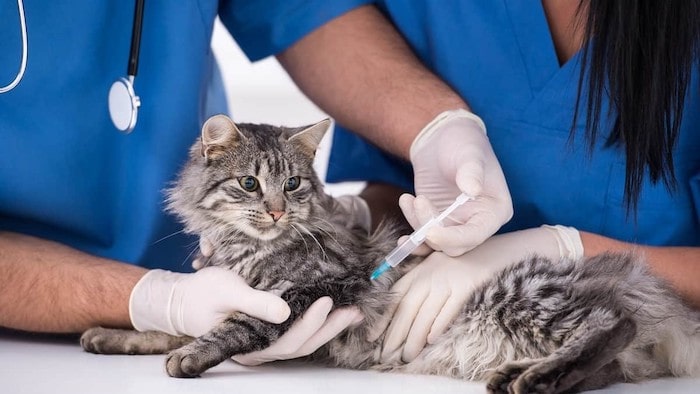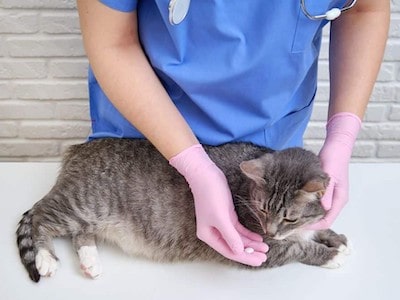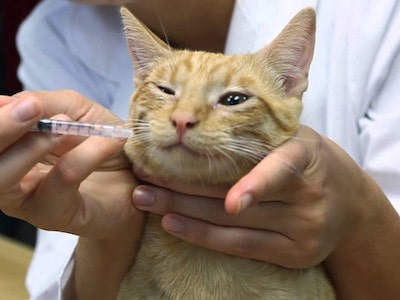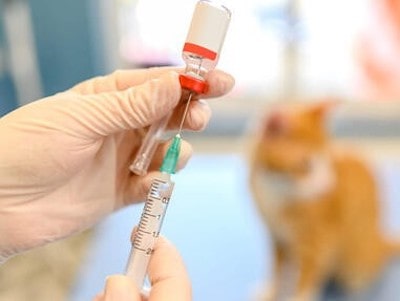It’s common to have concerns and queries about the health of our feline companions, especially when it comes to medication use. You’ve come to the right place if you’re unsure of the recommended dosage of penicillin for cats.
We will examine the topic of “How Much Penicillin to Give a Cat” in this article and provide you with valuable information and advice to protect your pet’s health. It’s essential to know your cat’s individual penicillin dosage in order to treat infections effectively and guarantee a speedy recovery.
In order to ensure the safe and efficient use of penicillin for the health of your cherished cat, let’s examine the factors to consider and the recommended dosages.
What is Penicillin and How Does It Work for Cats?
Penicillin is a type of antibiotic that belongs to the beta-lactam class. It works by interfering with the cell wall synthesis of bacteria, causing them to burst and die. Penicillin is effective against gram-positive bacteria, such as streptococci, staphylococci, and clostridia, but not against gram-negative bacteria, such as E. coli, salmonella, and pseudomonas.

Penicillin comes in different forms and formulations, such as penicillin G, penicillin V, procaine penicillin G, benzathine penicillin G, ampicillin, amoxicillin, and amoxicillin-clavulanate.
Some of these forms can be given orally as tablets or liquids, while others can be given by injection into a vein, muscle, or under the skin. The choice of penicillin form depends on the type and severity of infection, the route of administration, and the potential drug interactions.
Benefits of Penicillin for Cats
Penicillin has several benefits for cats with bacterial infections. It can:
- Reduce inflammation and pain caused by infection
- Prevent the spread of infection to other organs or tissues
- Eliminate the source of infection and restore normal function
- Prevent complications such as abscesses, septicemia, or organ failure
- Prevent recurrence or relapse of infection
- Enhance the immune system’s ability to fight off infection
Some of the common infections that penicillin can treat or prevent in cats are:

- Urinary tract infections (UTIs): These are caused by bacteria that enter the urinary tract through the urethra. They can cause symptoms such as frequent urination, blood in urine, straining to urinate, licking the genital area, or fever. Penicillin can help clear the infection and prevent it from reaching the kidneys or bladder.
- Skin infections (pyoderma): These are caused by bacteria that invade the skin through wounds, scratches, bites, or allergies. They can cause symptoms such as redness, swelling, pus, crusts, hair loss, or itching. Penicillin can help heal the skin lesions and prevent secondary infections or scarring.
- Ear infections (otitis): These are caused by bacteria that enter the ear canal through the eardrum or external ear. They can cause symptoms such as head shaking, ear scratching, discharge, odor, or pain. Penicillin can help reduce the inflammation and infection in the ear and prevent it from spreading to the middle or inner ear.
- Respiratory infections (pneumonia): These are caused by bacteria that enter the lungs through the nose or mouth. They can cause symptoms such as coughing, sneezing, nasal discharge, difficulty breathing, or fever. Penicillin can help clear the infection and prevent it from causing lung damage or sepsis.
Dosage and Administration of Penicillin for Cats
The dosage and administration of penicillin for cats depend on several factors, such as:
- The weight and body type of your cat
- The type and severity of infection
- The form and formulation of penicillin
- The route of administration
- The frequency and duration of treatment
- The potential drug interactions
The general dosage range for penicillin G for cats is 10,000 to 25,000 units per pound (20,000 to 50,000 units per kilogram) given two to six times a day. The exact dosage may vary depending on your veterinarian’s recommendation and your cat’s response to treatment.

Some tips to follow when giving penicillin to your cat are:
- Always consult your veterinarian before giving penicillin to your cat. Your veterinarian will prescribe the appropriate form, dosage, frequency, and duration of treatment for your cat’s condition.
- Always follow your veterinarian’s instructions carefully. Do not change the dosage or stop the treatment without your veterinarian’s approval.
- Always give penicillin with food or water if possible. This will help prevent stomach upset and improve absorption.
- Always use a syringe or dropper to measure the liquid form of penicillin accurately. Do not use a teaspoon or tablespoon as they are not accurate.
- Always shake the bottle well before giving the liquid form of penicillin to your cat. This will ensure even distribution of the drug in the solution.
- Always store penicillin in a cool and dry place away from light and moisture. Follow the storage directions on the label or ask your veterinarian for advice.
- Always dispose of any unused or expired penicillin safely. Do not flush it down the toilet or throw it in the trash.
Side Effects and Precautions of Penicillin for Cats
Penicillin is generally safe for use in cats when given at the correct dosage and under veterinary supervision. However, some cats may experience side effects or adverse reactions to this drug. Some of these include:
1) Allergic reactions: These are rare but serious reactions that can occur within minutes or hours after giving penicillin to your cat. They can cause symptoms such as hives, itching, facial swelling, difficulty breathing, vomiting, diarrhea, or shock.
If you notice any signs of an allergic reaction in your cat, stop giving penicillin immediately and contact your veterinarian or an emergency clinic right away.
2) Gastrointestinal upset: This is a common but mild reaction that can occur after giving penicillin to your cat. It can cause symptoms such as nausea, vomiting, diarrhea, or loss of appetite.
If these symptoms are mild, you can continue giving penicillin with food or water and monitor your cat closely. If these symptoms are severe, stop giving penicillin and contact your veterinarian for advice.
3) Disruption of normal gut flora: This is a possible but uncommon reaction that can occur after giving penicillin to your cat for a long time. It can cause an imbalance in the normal bacteria population in your cat’s gut, leading to overgrowth of harmful bacteria or yeast.
This can cause symptoms such as diarrhea, vomiting, weight loss, or poor coat condition. If you notice any signs of gut flora disruption in your cat, stop giving penicillin and contact your veterinarian for advice.

Some precautions to take when giving penicillin to your cat are:
- Do not give penicillin to your cat if he/she is allergic to it or any other beta-lactam antibiotic.
- Do not give penicillin to your cat if he/she has kidney disease, liver disease, or blood disorders.
- Do not give penicillin to your cat if he/she is pregnant, nursing, or very young.
- Do not give penicillin to your cat if he/she is taking any other medication that may interact with it. Some examples are antacids, probenecid, allopurinol, tetracyclines, chloramphenicol, or erythromycin.
- Do not give penicillin to your cat if he/she is a guinea pig. Guinea pigs are very sensitive to penicillin and may develop a fatal condition called enterotoxemia if given this drug.
Conclusion
In conclusion, knowing how much penicillin to give your cat is an essential aspect of responsible pet care. By understanding the factors that influence dosage and following the recommended guidelines, you can ensure the safe and effective administration of this antibiotic.
Remember to always consult with your veterinarian before administering any medication to your cat, as they will provide tailored advice based on your cat’s specific needs and health condition.
By being proactive in your cat’s healthcare, you play a vital role in their well-being. Regular veterinary check-ups, open communication with your veterinarian, and following proper medication protocols are key to promoting a healthy and happy life for your feline companion.
